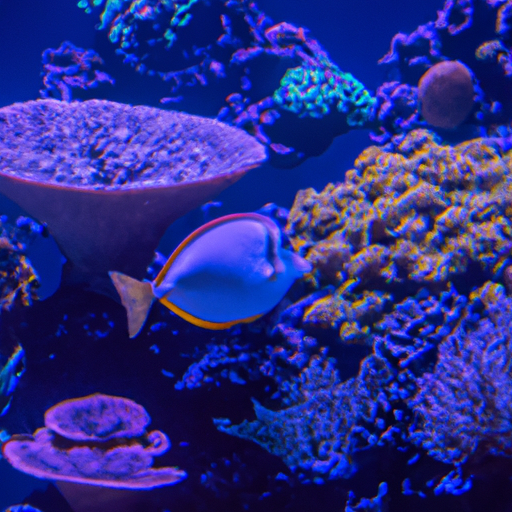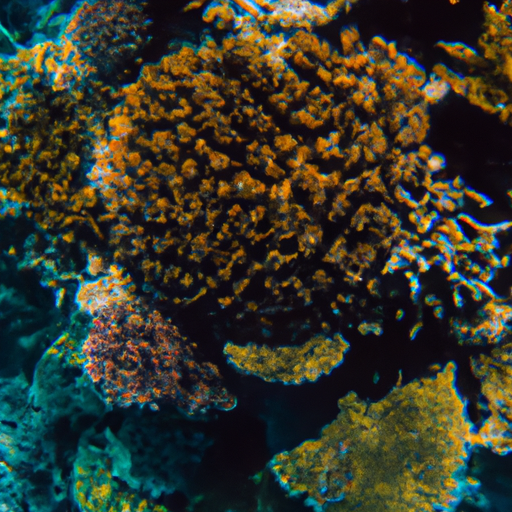
Exploring the Depths: Revealing the Unknown Species of the Sea
Exploring the Depths: Revealing the Unknown Species of the Sea
Unveiling the Mysteries of Marine Life: Discovering Hidden Species and Behaviors in the Sea
The Earth’s oceans cover more than 70% of its surface, yet there is still so much we do not know about the organisms that inhabit these vast aquatic realms. From the bizarre and otherworldly creatures that dwell in the abyssal trenches to the microscopic organisms thriving in the sunlit shallows, the oceans hold countless secrets waiting to be uncovered. Scientists and researchers from around the world dedicate their lives to exploring the depths and revealing the mysteries of marine life.
One of the most thrilling aspects of marine exploration is the discovery of new species. Despite centuries of scientific advancement, nearly two-thirds of marine species remain unknown. Every deep-sea expedition brings back astonishing new creatures that challenge our understanding of life on Earth. Recently, scientists uncovered a previously unknown species of octopus with a unique bioluminescent adaptation, capable of emitting radiant colors in a display that rivals even the most vibrant coral reefs.
Aside from the thrill of discovering newly evolved organisms, marine exploration also sheds light on the behaviors and interactions of known species. Through advanced technologies like underwater drones and high-resolution cameras, researchers can observe marine life in their natural habitats without disturbing their delicate ecosystems. These observations have led to fascinating revelations, such as the intricate social structures of dolphins and the complex communication systems of whales.
Furthermore, understanding the hidden relationships between species is crucial for maintaining the delicate balance of marine ecosystems. From the microscopic plankton that form the base of the food chain to the apex predators at the top, every organism plays a vital role. By studying these relationships, scientists can identify the key species that are most vulnerable to environmental changes and design effective conservation strategies to protect them.
Marine exploration also has practical implications beyond scientific curiosity. The unique adaptations and biochemical properties of marine organisms have led to the development of new drugs and medical treatments. Many of the drugs used in cancer treatments, for example, are derived from compounds found in marine sponges and corals.
In conclusion, exploring the depths of the oceans has revealed the existence of countless unknown species and behaviors. By unveiling these mysteries, scientists gain insights into the complex web of life underwater, discover potential medical breakthroughs, and contribute to the preservation of marine ecosystems. It is an ongoing journey of discovery that highlights the vastness and importance of our oceans.
Unveiling Marine Marvels: Revealing the Secret Lives of Underwater Creatures
Unveiling the Mysteries of Marine Life: Discovering Hidden Species and Behaviors in the Sea.
The vast depths of the ocean hold countless wonders that remain undiscovered and shrouded in mystery. From the tiniest microorganisms to the largest marine mammals, the sea teems with life, presenting scientists with an endless fascination and a myriad of questions. Through dedicated research and technological advancements, we are gradually unraveling the secrets of marine life, unveiling hidden species and behaviors that astonish and inspire.
One of the most intriguing aspects of studying marine life is the constant discovery of new species. Each expedition to the depths of the ocean brings forth a wealth of previously unknown creatures, illuminating the diverse and intricate ecosystem that exists beneath the waves. Scientists estimate that over 80% of the ocean’s species still remain unidentified, emphasizing the untapped potential for discovery. From bizarre deep-sea fish with bioluminescent adaptations to unique crustaceans with intricate patterns, each newly discovered species offers a glimpse into the complexity of life in the sea.
Technological advancements have played a pivotal role in expanding our understanding of marine life. Oceanographic research vessels equipped with state-of-the-art instruments enable scientists to explore previously inaccessible regions of the ocean, such as deep-sea trenches and hydrothermal vents. Remote-operated vehicles (ROVs) and autonomous underwater vehicles (AUVs) equipped with high-definition cameras and sampling tools allow scientists to capture detailed footage and collect samples from extreme depths. These tools provide unprecedented insights into the behaviors and habitats of marine organisms, offering a more comprehensive picture of their lives.
Studying marine life also involves unraveling the mysteries of their behaviors and interactions. The marine environment is a complex web of interconnected relationships, where organisms rely on each other for survival. From the synchronized movements of a school of fish to the intricate hunting strategies of a pod of dolphins, the behaviors exhibited by marine creatures are a testament to their adaptability and intelligence. With the help of advanced tracking devices, scientists can monitor the migratory patterns of marine species, study their communication methods, and gain insight into their hierarchical structures.
Understanding marine life is not only crucial for scientific curiosity but also for conservation efforts. With climate change and human activities threatening the delicate balance of the ocean, uncovering the mysteries of marine life becomes an urgent task. By studying the hidden species and behaviors in the sea, we can better assess the impact of human intervention and implement effective measures to protect and preserve these fragile ecosystems.
As our knowledge of marine life continues to expand, so does our appreciation for the incredible diversity and complexity of the underwater world. Through ongoing research and exploration, we are slowly unveiling the secrets of the ocean, shedding light on the hidden species and behaviors that make the marine realm a true marvel of nature.
Keywords: marine life, hidden species, behaviors, ocean, discovery, underwater world, research, technological advancements, conservation.
Beneath the Surface: Discovering Hidden Behaviors in the Underwater World
The underwater world is a fascinating realm, filled with an incredible diversity of marine life. Exploration of the oceans has revealed some of the most extraordinary species and behaviors, captivating scientists and nature enthusiasts alike. Unveiling the mysteries of marine life is an ongoing endeavor, driven by advancements in technology and a deep curiosity to understand the hidden treasures that lie beneath the surface.
One of the greatest wonders of the sea is the discovery of previously unknown species. Marine biologists are constantly amazed by the sheer number of new organisms they encounter during their explorations. From tiny, translucent crustaceans to massive, elusive deep-sea predators, these hidden species provide valuable insights into the biodiversity and evolutionary history of our planet.
Uncovering hidden behaviors in marine life is equally as exciting. Through careful observation and innovative research techniques, scientists have revealed a myriad of fascinating behaviors that were previously unknown. For example, the discovery of bioluminescent creatures that emit mesmerizing light displays in the depths of the ocean has opened up a whole new world of exploration and understanding.
Technological advancements have played a crucial role in unlocking the secrets of the underwater world. Remote-operated vehicles (ROVs) equipped with high-resolution cameras and sensors allow scientists to explore depths that were once unreachable. These sophisticated tools enable researchers to observe marine organisms in their natural habitats without causing disturbance, providing valuable data on their behaviors and interactions.
Another innovative tool used to study marine life is the use of bioacoustics. By recording and analyzing underwater sounds, scientists can gain insights into the communication and social behaviors of various species. For example, the hauntingly beautiful songs of humpback whales are now known to have distinct patterns and purposes, including mating rituals and social bonding.
Understanding the hidden species and behaviors in the sea is crucial for conservation efforts. Many marine organisms are vulnerable to human activities such as overfishing, habitat destruction, and climate change. By uncovering the mysteries of marine life, scientists can better assess the impact of these threats and develop strategies for protection and preservation.
In conclusion, the underwater world is a sanctuary of hidden species and behaviors waiting to be discovered. Through exploration, technological advancements, and a dedication to conservation, scientists continue to unveil the mysteries of marine life. Each new discovery brings us closer to understanding the complexity and beauty of the underwater realm, reinforcing the need to protect and cherish this invaluable treasure.
Unlocking the Mysteries of Marine Life: Uncovering the Secrets of the Sea
Unlocking the mysteries of marine life has long been a fascination for scientists and explorers alike. The vastness and complexity of the ocean make it a treasure trove of hidden species and behaviors waiting to be discovered. Through advancements in technology and scientific research, we are slowly unveiling the secrets that lie beneath the surface of the sea.
One of the most exciting aspects of uncovering marine life mysteries is the discovery of new species. Despite centuries of exploration, scientists estimate that only a fraction of the Earth’s marine species have been identified. With each new expedition, we have the opportunity to encounter previously unknown creatures, from minuscule microorganisms to giant sea creatures lurking in the depths.
For example, in recent years, researchers have discovered a plethora of new species in the previously unexplored depths of the ocean. The discovery of the “hairy-chested Hoff crab” in the Antarctic waters is just one example of how uncovering the mysteries of marine life can lead to fascinating finds. This crab has a unique adaptation with its bristly chest, which helps it cultivate and nurture bacteria for its survival in the extreme cold.
Unveiling the mysteries of marine life also involves studying the behaviors of existing species. Through observation and advanced technology, scientists are gaining a deeper understanding of how marine creatures interact with their environment and each other. For instance, the study of whale songs has provided valuable insights into the communication and social structure of these majestic creatures.
Technological advancements have played a crucial role in our ability to explore and uncover the mysteries of marine life. Sonar systems, remotely operated vehicles (ROVs), and autonomous underwater vehicles (AUVs) have allowed scientists to access deep-sea environments that were once inaccessible. These tools provide a window into the hidden world beneath the waves, capturing valuable data and imagery that contribute to our understanding of marine ecosystems.
As we continue to unveil the mysteries of marine life, it is crucial to recognize the importance of conservation efforts. Exploring and discovering new species and behaviors should not come at the cost of damaging the delicate balance of the ocean ecosystem. By studying and understanding these mysteries, we can better appreciate the need to protect and preserve marine environments for future generations.
In conclusion, uncovering the mysteries of marine life is an ongoing journey that keeps scientists and explorers motivated. The discovery of new species and behaviors allows us to glimpse the intricate complexity of the ocean ecosystem. Through technological advancements and conservation efforts, we can continue to unlock the secrets of the sea and protect the wonders that lie beneath the surface.


